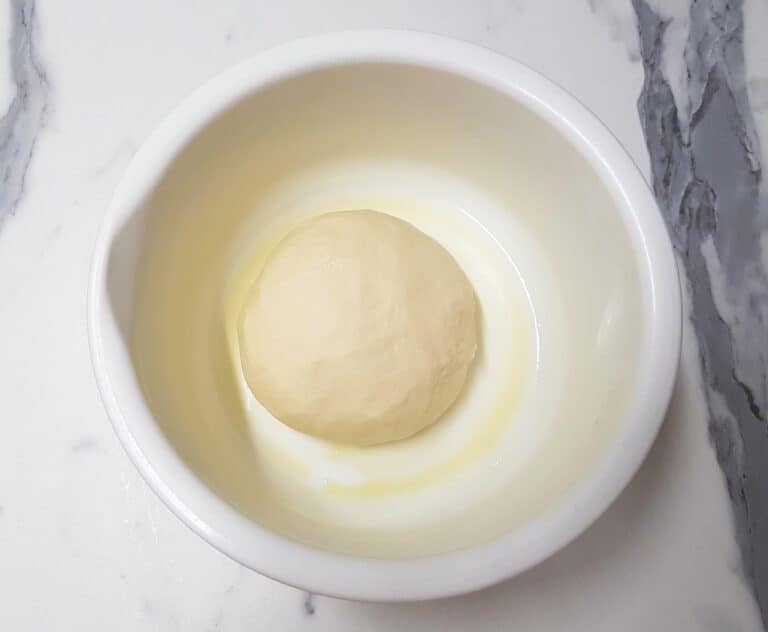This wonderfully light and fluffy Italian focaccia with juicy Italian cherry tomatoes and oregano is truly scrumptious. Crisp on the outside and deliciously tender and chewy on the inside, this is bound to become one of your favourites! Aromatic oregano and crunchy sea salt perfectly complement the sweet little cherry tomatoes embedded in the crust. It’s always a hit with everyone!
This particular focaccia recipe is from the Italian region of Liguria , where there’s at least one focacceria in every village, and the locals munch on it throughout the day – even at breakfast time. There’s always a queue outside, and tourists buy slabs of it to take to the beach for lunch. While there are other regional versions of focaccia, like focaccia barese (from the town of Bari), made with mashed potatoes incorporated into the dough and topped with tomatoes, the most famous of all is focaccia genovese, from the city of Genoa in Liguria.
This cherry tomato and oregano focaccia is perfect as an appetiser, along with a glass of Prosecco before dinner or as part of a buffet spread. It’s great for a picnic during the summer or as an accompaniment to a salad at lunchtime. Kids will love it as an afternoon snack! I often serve it with a plate of vegetables instead of bread. This recipe is naturally vegan and is so easy to make! The ingredients are very similar to those of a pizza, but the quantities and methods are different, and, of course, there is no cheese or tomato sauce on focaccia.

About this recipe
I first learnt how to make focaccia (and bread and pizza) during the first Covid 19 lockdown. During the pandemic, we suddenly had lots of time on our hands, and I made use of that by spending more time outdoors, walking in the woods and surrounding countryside. Here in Switzerland, we were lucky, and we were allowed to do that.
I also spent more time in the kitchen, experimenting and making things I’d never made before. I couldn’t go to Italy, which was a weird feeling because I can literally see the border from where I live. So that meant no more pizza, no more cheap shopping on the other side of the border, no more trips to the sea and, heaven forbid, no more sailing. Thank goodness there were things like this indulgent and comforting cherry tomato and oregano focaccia to keep me distracted.
This recipe is really easy to make! All you have to do is mix the ingredients in one bowl with a spatula, knead it briefly and then wait for it to rise. It only takes around two hours to make from start to finish and hands-on time is minimal.

Tips for perfect focaccia bread with cherry tomatoes and oregano
If you’ve never made focaccia before, here are a few tips to make sure you get perfect results.
- Real Italian focaccia is not overly thick and should never be heavy. It should be light and moist with a soft, chewy interior and crisp edges.
- Allow two or three hours to make your cherry tomato focaccia because the dough needs time to rise. It might need a little help in winter – place it near a radiator or in a warm spot in your house. Alternatively, you can briefly turn on your oven (to around 30°C/85°F) and then switch it off before placing the dough inside. This creates a warm, draft-free environment that’s perfect for rising.
- Bear in mind that it’s fundamental to use quality ingredients (see the recommendations in the ingredient list below).
- Use the right-sized tin. The quantities indicated in the recipe card below are for a 26-28 cm diameter tin. If your tin is a different size, see the note at the foot of the recipe card – you’ll find a link to a website that calculates everything for you, automatically reducing or increasing the quantities proportionally to the tin you’ll be using.
- Never use a rolling pin to spread the focaccia out in the pan. Instead, gently spread it out using your fingers, going from the centre outwards so as not to “deflate” the air bubbles.
- To make the characteristic dents in focaccia bread, wet your fingers and poke deep holes in the dough all the way down to the baking tray.
- Ovens can vary significantly, so you might need to adjust the times and temperatures slightly. The focaccia is ready when it’s lightly golden on top and crisp around the edges.
- Always allow the focaccia to cool slightly before cutting it. Italians use a bead knife or scissors to slice focaccia.
- For the best results, I suggest you read through the ingredient list and instructions below before jumping to the recipe card.
Ingredients
You’ll find the exact quantities of each ingredient in the recipe card at the bottom of the page.
Flour
For this recipe, you can use plain, all-purpose flour or strong bread flour. In Italy, you can find flour specifically formulated for focaccia. This is usually a blend of strong bread flour and a small percentage of semola rimacinata – a very finely ground semolina flour. I prefer to use either focaccia flour or strong bread flour, as they consistently deliver the best results. Don’t worry if you only have all-purpose flour – that will work, too. You could also experiment by mixing any of the above flours in any proportion, depending on what you have on hand.
Salt
You’ll need fine salt for the focaccia dough and coarse salt for sprinkling on the top. I use unrefined sea salt for its health benefits.
Water
The water should be lukewarm – if it’s too warm, you could end up killing the yeast.
Yeast
This recipe calls for fresh yeast, but if you only have dried yeast on hand, check the note at the bottom of the recipe card for the conversion details.
Sugar
A small amount of sugar kickstarts the fermentation process by feeding the yeast, helping the dough rise faster and more consistently.
Oil
For authentic Italian focaccia, extra virgin olive oil is a must. Its rich, fruity flavour and quality are unmatched, so don’t even consider using anything else!
Tomatoes
Tomato focaccia bread is traditionally made with cherry tomatoes because their natural sweetness and juiciness create the perfect topping. Where possible, choose in-season cherry tomatoes that are ripe but firm. If they’re out of season or unavailable, you could substitute them with slices of regular tomatoes, such as Roma or plum varieties.
Oregano
Fresh oregano adds a more vibrant flavour, but dried oregano works just as well if that’s what you have. If you prefer, you could use rosemary instead.
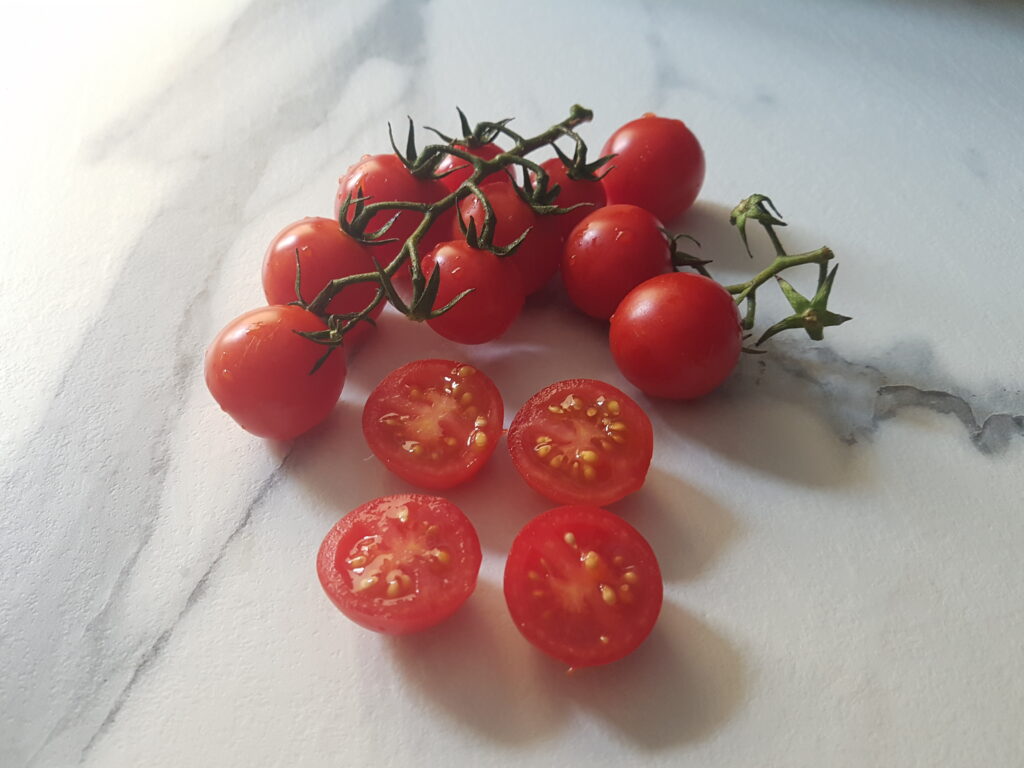
Instructions
How to make focaccia dough
You’ll find step-by-step instructions with photos in the recipe card at the bottom of this page.
- First of all, sift the flour and salt into a bowl and set aside.
- Measure or weigh the water and make sure that it is only lukewarm before pouring it into a jug and adding the fresh yeast and sugar. Remember – if the water is too warm, it will kill the yeast, and your dough won’t rise. You can help the yeast to dissolve by putting your fingers in the jug and mixing it with your fingertips.
- Once the yeast has dissolved, pour it into the bowl with the flour and salt. Then, add the oil.
- Mix the ingredients with a spatula or in an electric dough mixer until the dough comes together.
What to do if your dough is too dry or too wet
- Give the dough enough time to come together properly, but bear in mind that different flours have different water-absorbing properties. If the dough feels too dry, add water a teaspoon at a time, mixing until you achieve the right consistency. The perfect dough will feel slightly sticky to the touch. If the dough is too wet, add a teaspoon of flour and knead it thoroughly before adding more, repeating as needed until the consistency is just right. If you have weighed your ingredients precisely, your dough should be perfect.
Knead the focaccia dough
- You can either use a dough mixer or knead it by hand for 5 to 10 minutes on a clean worktop. When the dough is smooth and elastic, shape it into a ball.
The first dough rise
- Grease a bowl with a tablespoon of olive oil. The bowl you used for mixing the ingredients will do. Put the ball of dough in the bottom of the bowl. The oil will prevent it from sticking. Cover the bowl with a silicone lid or cling film and leave it in a warm place for an hour. The lid or cling film is to prevent the dough from drying out on top.
- The dough will rise better in a warm place. Check on it after an hour – your dough should have risen considerably, at least double the initial volume. Leave it a little longer if necessary.
The second dough rise
- Grease a round baking tray with some olive oil. Tip the dough directly onto the greased baking sheet – a quick shake will free it from the bottom of the bowl.
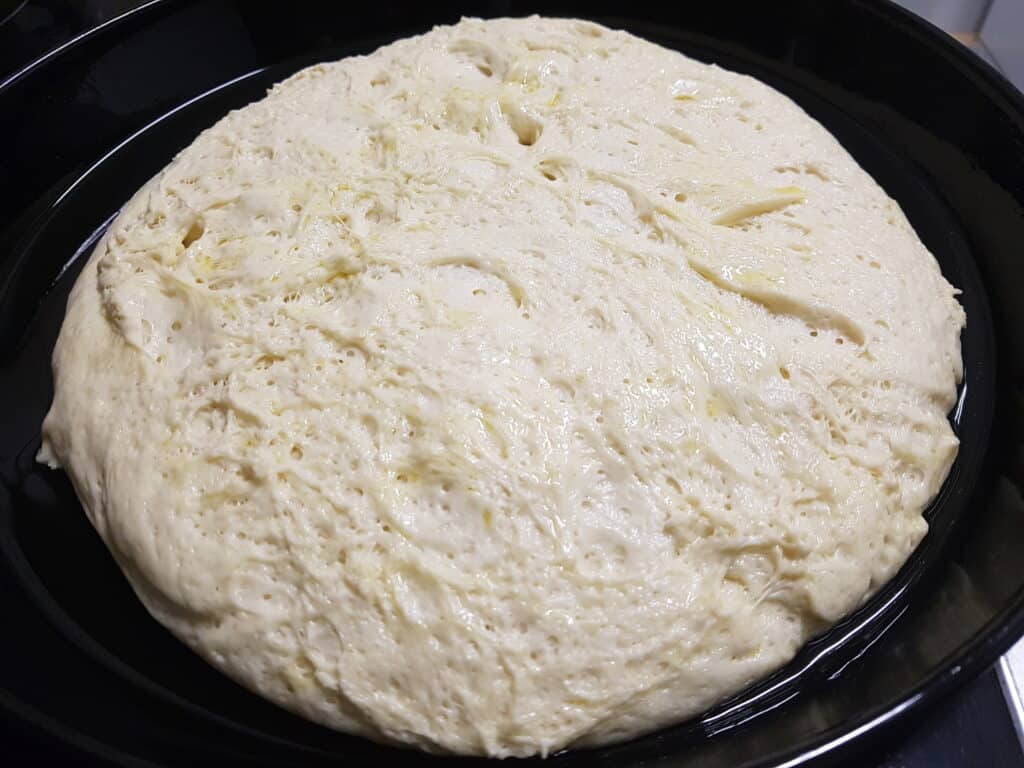
- Very carefully spread the dough out with your fingertips until it uniformly fills the tray. Try not to flatten it or knock the air bubbles out of it. A gentle movement of the fingertips from the centre outwards will do the job! Cover it with cling film again and let the dough continue to rise for another 20 minutes.
How to bake focaccia with cherry tomatoes and oregano
- Preheat the oven to 210 °C.
- Crush some coarse, unrefined sea salt with a mortar and pestle or with the back of a spoon.
- Uncover the dough and wet your fingertips. Use your middle finger to poke deep dents all the way down to the bottom of the baking tray. I usually make an outer circle of 12 holes, an inner circle of 6 and a hole in the centre. Imagine the twelve points of a clock for the outer circle. Otherwise, you can just make random holes.
- Drizzle some extra virgin olive oil and a couple of tablespoons of water over the focaccia (don’t skip this!) and use your fingertips to gently spread it all over the surface.
- Wash the cherry tomatoes and slice them in half across the middle, horizontally rather than vertically, so that the core remains invisible underneath. You can choose whether to put the tomatoes in alternate holes or one in each hole. I love juicy little cherry tomatoes, so I put one in each hole!
- Finish by sprinkling the crushed coarse sea salt and oregano all over the surface of the focaccia.

- Put the focaccia onto a very hot oven tray (solid tray, not a rack) in the centre of the oven.
- Bake for approx. 20 minutes or until the focaccia is lightly golden and cooked through. Turn the heat up to 220 °C for the last few minutes if the focaccia bread is still pale.
- Remove from the oven and drizzle some more extra virgin olive oil over the focaccia. Authentic Italian focaccia is really quite oily but if you want a lighter version, feel free to cut down on the amount of oil.
How to serve focaccia with cherry tomatoes and oregano
Leave your focaccia to stand for 5 minutes before trying to cut it. Then, slice it and serve it warm or cold. Cherry tomato and oregano focaccia is great as an appetiser with a glass of prosecco or your favourite wine. Take it on a picnic or to the beach. Kids adore focaccia. Serve it with vegetables, salad or soup instead of bread. It’s also immensely popular on a buffet table where people can use it to mop up dips and eat with grilled or roasted vegetables and lots of other tasty morsels.

Alternative toppings for focaccia
Authentic Italian focaccia toppings are usually simple, featuring just one or two ingredients. In Liguria, the four classic varieties are green olives, sliced onions, cherry tomatoes paired with a herb like oregano or rosemary, and plain focaccia.
How to store focaccia with cherry tomatoes and oregano
Focaccia is always best when freshly baked but any leftovers can be stored in an airtight container in the fridge where it will keep for 3 – 4 days.
Can you freeze focaccia bread?
Yes, you can freeze focaccia – it will keep well for a couple of weeks in a domestic freezer. Of course, technically, it is possible to freeze it for much longer, but I find that bread and focaccia don’t keep well for long periods in the freezer. Baking products tend to suffer from freezer burn, which ultimately changes the texture of the food.
How to reheat focaccia
Focaccia is best reheated briefly in a hot oven. Avoid using the microwave because it will make it rubbery.
I’m sure you’ll love this cherry tomato focaccia recipe! If you do, I’d love to hear about it! Let me know in the comments below, or take a quick pic and share it on social media. Don’t forget to tag me on Instagram or Facebook vegan_hot_stuff. I love seeing your re-creations!
Frequently asked questions
Do I need to peel or seed the tomatoes before using them?
No, there’s no need to peel or seed cherry tomatoes. Simply wash them and use them whole or halved, depending on your preference.
Can I make the dough ahead of time?
Yes, focaccia dough can be made ahead. Once kneaded, cover it and let it rise in the refrigerator overnight. Bring it to room temperature before baking.
Can I add other toppings to my cherry tomato and oregano focaccia?
Certainly! Popular additions include rosemary, olives, garlic, or onions.
Can I make this cherry tomato focaccia gluten-free?
Yes, you can use a gluten-free flour blend designed for bread baking.
Can I make focaccia with wholemeal flour?
Yes, you can use wholemeal flour to make this cherry tomato and oregano focaccia, but it will make it denser and less airy. On the plus side, wholemeal flour has a nutty flavour and health benefits because it contains the whole grain. Consider mixing wholemeal flour and white flour to strike the perfect balance between health benefits and satisfaction. A 50:50 ratio or similar proportion would result in a perfect, wholesome flavour, and a soft and pillowy texture – the best of both worlds!
What’s the difference between no-knead focaccia and standard focaccia?
No-knead focaccia requires minimal effort and relies on a long resting period (usually overnight) to develop the gluten. Standard focaccia involves kneading the dough, which builds gluten more actively and shortens the rising time. Both methods produce delicious results. No-knead dough is usually wetter (high hydration), whereas standard focaccia is firmer and easier to handle.
I hope you enjoy this focaccia bread with cherry tomatoes and oregano! If you do, it would be great if you could give it a star rating and leave a comment below! It helps me a lot, and it also helps others discover my blog and recipes. Thanks so much for your support! Deborah xx
While you’re here, maybe you’d like to have a look at some other popular recipes!
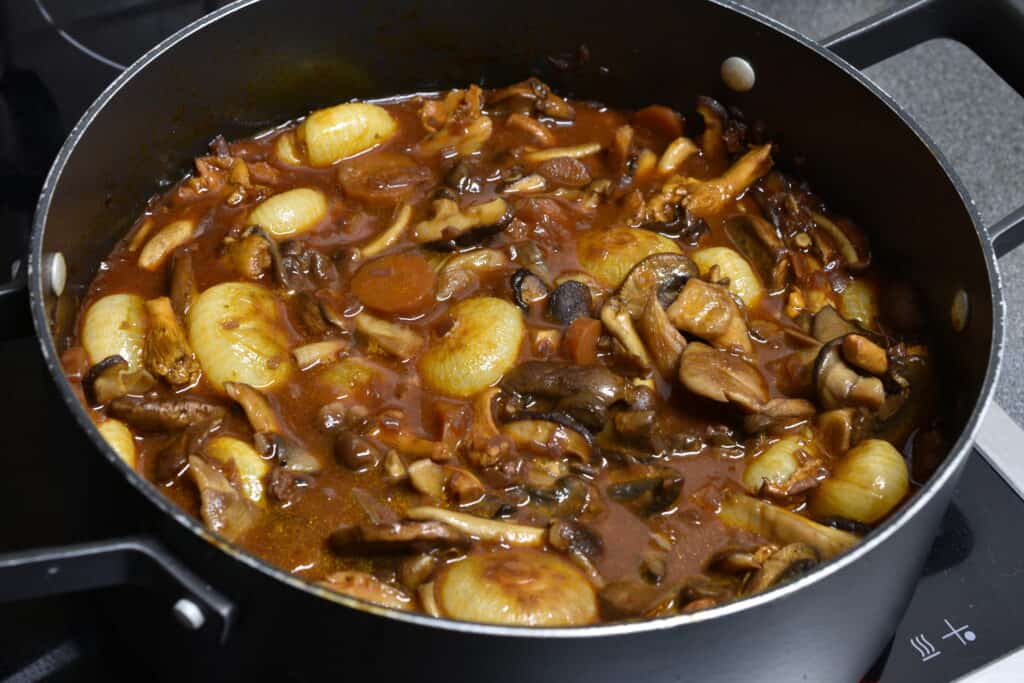
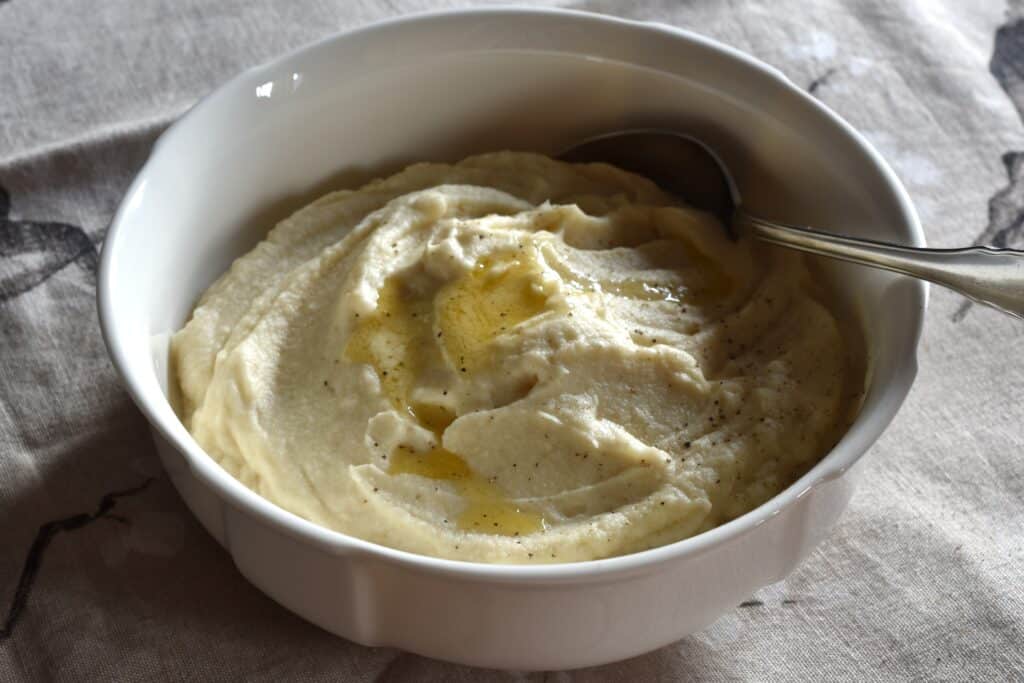
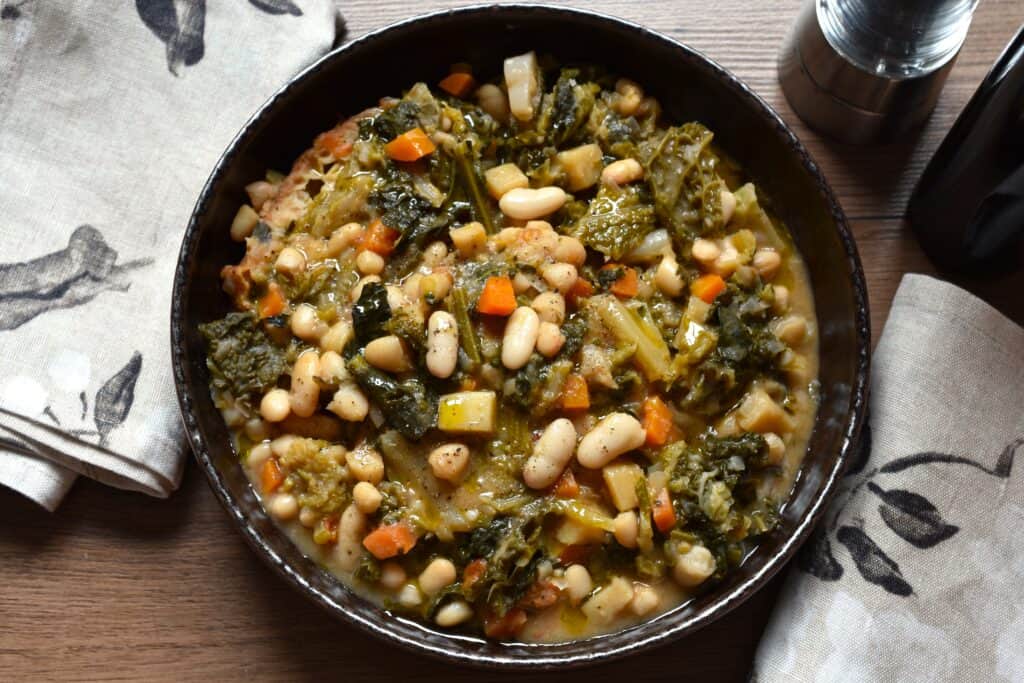
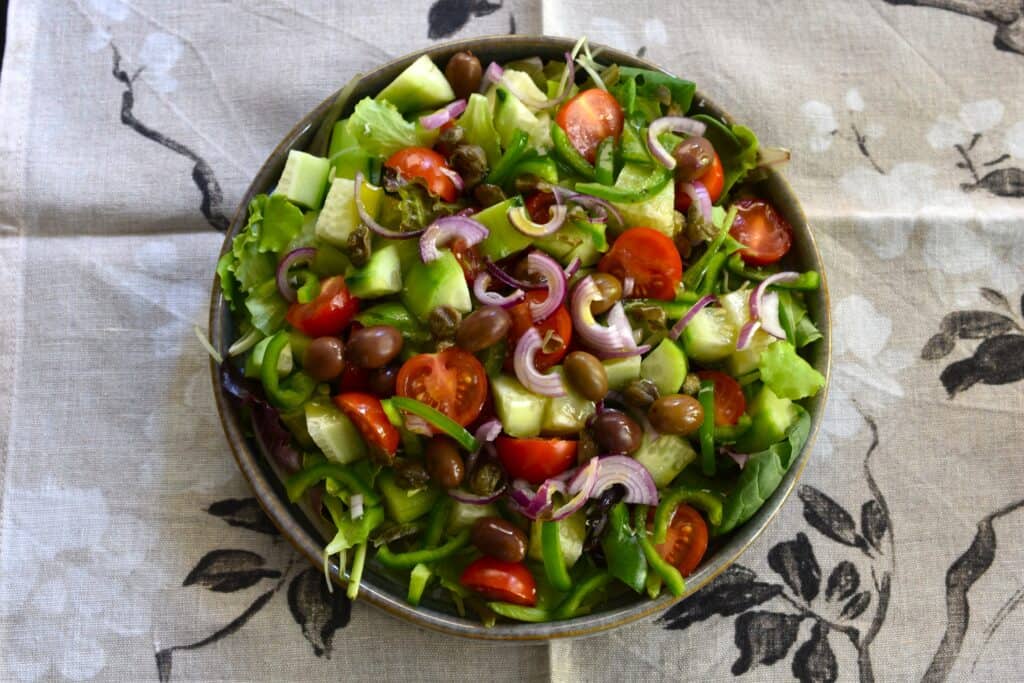
Subscribe below to receive more vegan recipes as soon as I publish them!




